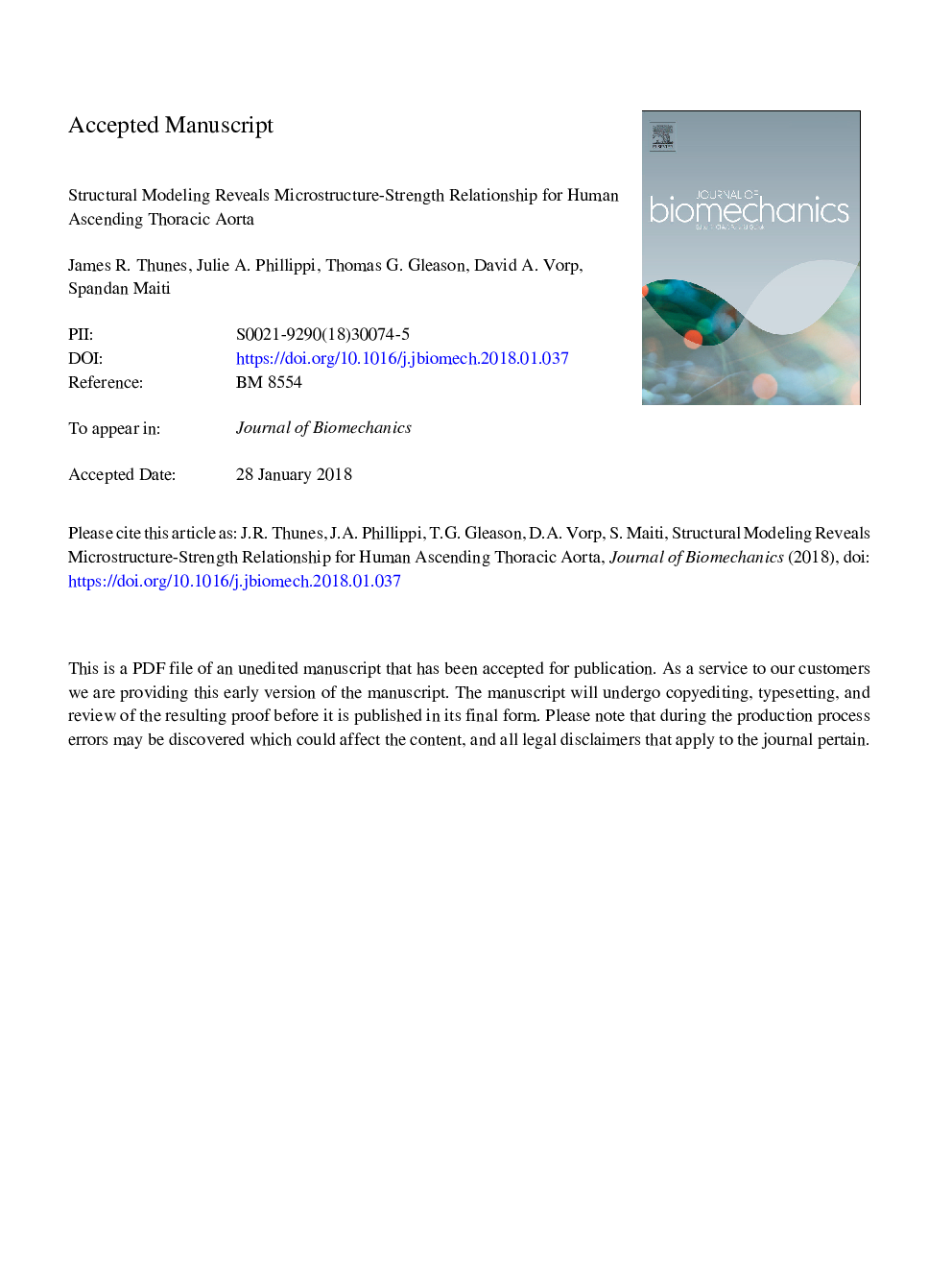| Article ID | Journal | Published Year | Pages | File Type |
|---|---|---|---|---|
| 7236420 | Journal of Biomechanics | 2018 | 29 Pages |
Abstract
High lethality of aortic dissection necessitates accurate predictive metrics for dissection risk assessment. The not infrequent incidence of dissection at aortic diameters <5.5â¯cm, the current threshold guideline for surgical intervention (Nishimura et al., 2014), indicates an unmet need for improved evidence-based risk stratification metrics. Meeting this need requires a fundamental understanding of the structural mechanisms responsible for dissection evolution within the vessel wall. We present a structural model of the repeating lamellar structure of the aortic media comprised of elastic lamellae and collagen fiber networks, the primary load-bearing components of the vessel wall. This model was used to assess the role of these structural features in determining in-plane tissue strength, which governs dissection initiation from an intimal tear. Ascending aortic tissue specimens from three clinically-relevant patient populations were considered: non-aneurysmal aorta from patients with morphologically normal tricuspid aortic valve (CTRL), aneurysmal aorta from patients with tricuspid aortic valve (TAV), and aneurysmal aorta from patients with bicuspid aortic valve (BAV). Multiphoton imaging derived collagen fiber organization for each patient cohort was explicitly incorporated in our model. Model parameters were calibrated using experimentally-measured uniaxial tensile strength data in the circumferential direction for each cohort, while the model was validated by contrasting simulated tissue strength against experimentally-measured strength in the longitudinal direction. Orientation distribution, controlling the fraction of loaded collagen fibers at a given stretch, was identified as a key feature governing anisotropic tissue strength for all patient cohorts.
Related Topics
Physical Sciences and Engineering
Engineering
Biomedical Engineering
Authors
James R. Thunes, Julie A. Phillippi, Thomas G. Gleason, David A. Vorp, Spandan Maiti,
